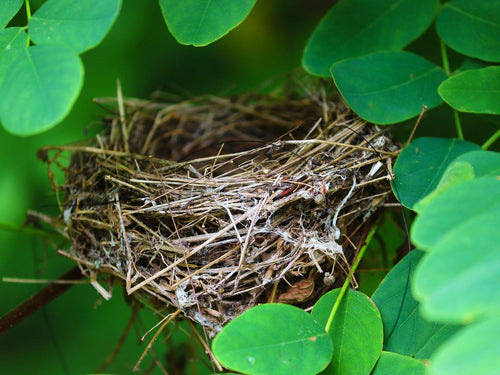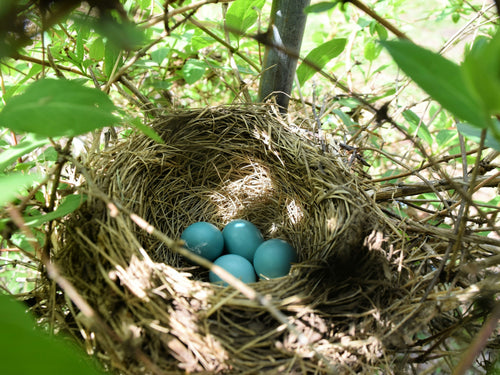How Long Does It Take for Bird Eggs to Hatch? A Complete Guide for Bird Lovers
TTNatureTeam
Ever spotted a bird quietly nesting and thought, “When will those eggs hatch?” Whether you're a backyard birdwatcher or just curious about what’s happening inside the nest, you're not alone. The truth is, hatching times can vary a lot depending on the species—and there’s more going on than meets the eye.
Let’s break it all down.
When Does Incubation Start?
Not all birds start incubating their eggs right away. Some begin after the first egg is laid, while others wait until the entire clutch is complete. This affects whether all chicks hatch at once (synchronous hatching) or over a span of days (asynchronous hatching).
Once incubation starts, the eggs are kept warm and gently rotated by the parents to help the embryos develop properly.
The Hatching Timeline: Fast vs. Slow Hatchers
So, how long does it take? It depends on the species.
Fastest hatchers: Tiny songbirds like the zebra finch can hatch in just 10 to 12 days.
Longest incubation: The wandering albatross takes a whopping 70–80 days to hatch.
As a general rule:
Smaller birds = shorter incubation
Larger birds = longer incubation
Most backyard birds in the U.S. fall somewhere in between. Here are some real-life examples:
American Robin
One of the most familiar backyard birds in the U.S., robins typically lay 3–5 eggs.
Incubation time: 12–14 days
After hatching, baby robins stay in the nest for about 2 weeks before fledging.

Mourning Dove
Known for their soft cooing, mourning doves often nest on windowsills or in hanging planters.
Incubation time: Around 14 days
Both male and female take turns sitting on the eggs.

Blue Jay
Larger and highly intelligent, blue jays lay 3–6 eggs per clutch.
Incubation time: 16–18 days
Only the female incubates, while the male brings food to her.

House Finch
A common visitor to feeders across the U.S., house finches often nest in hanging baskets or building ledges.
Incubation time: 12–14 days
These birds may have multiple broods in one season.

Northern Cardinal
Loved for their bright red color, cardinals are early spring nesters.
Incubation time: 11–13 days
The female does most of the incubating, while the male helps feed her.

Do Birds Leave Their Eggs Alone?
Yes, and it’s totally normal!
Parent birds take short breaks to feed or move away from the nest briefly. As long as those breaks aren’t too long, especially in mild weather, the eggs stay perfectly safe.
In fact, sitting continuously on eggs without a break could stress the parent, making incubation less effective.
How to Tell If an Egg Is Still Alive
You may be tempted to check in on a nest you’ve discovered—but remember, most wild bird nests are protected by law.
Still, without touching anything, here’s how to tell if eggs are likely still viable:
They feel warm when the parent is present.
No strong odor—a rotten egg smells distinctly bad.
No visible damage or discoloration.
Experts use a method called candling (holding a light behind the egg to check for signs of life like veins or movement), but this should only be done by professionals or wildlife rehabilitators.
Note: In the U.S., many bird species are protected under the Migratory Bird Treaty Act, which means it’s illegal to touch or disturb active nests.
The Hatching Process
Once it’s time, the chick will begin pipping—using a tiny “egg tooth” to crack through the shell. This process can take up to 24 hours or more. It’s exhausting, so don’t be surprised if the chick takes breaks during the hatch.
After fully emerging, the chick stays in the nest and is cared for by its parents for several days or even weeks, depending on the species. This "nestling period" is just as important as incubation—it's when the young bird builds strength, grows feathers, and gets ready to fledge.
Here’s a quick look at how long some common U.S. birds typically stay in the nest after hatching:
|
Bird Species |
Time in Nest (Days) |
Notes |
|
American Robin |
13–15 days |
Fast growers, often fledge in 2 weeks |
|
Mourning Dove |
12–15 days |
Both parents feed the young |
|
House Finch |
12–19 days |
Varies slightly by season |
|
Blue Jay |
17–21 days |
Stay longer due to larger size |
|
Northern Cardinal |
9–11 days |
Fledge quickly, but remain nearby |
|
Chickadee |
16–18 days |
Young often stay together post-fledge |
|
Eastern Bluebird |
16–21 days |
May have multiple broods per season |
Keep in mind, even after they leave the nest (a process called fledging), many young birds remain under their parents’ watch for several more days as they learn to forage and fly.
Final Thoughts
So, how long does it take for bird eggs to hatch? It can range from just 10 days to more than 80, depending on the bird. Most U.S. backyard birds fall into the 12 to 18-day window.
Next time you spot a nest tucked in a tree or captured on your smart bird feeder cam, remember: even if nothing looks like it’s happening, there’s a whole world of life unfolding inside those tiny shells.
Nature works on its own timeline—and it’s always worth the wait.




